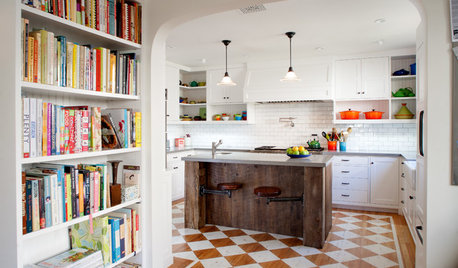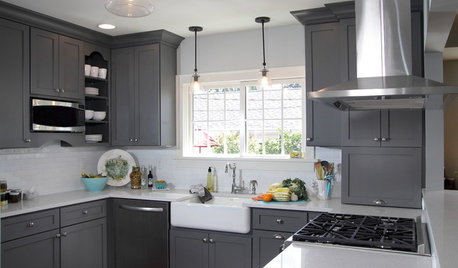Some observatoins on my flow through systems
mr_yan
11 years ago
Related Stories

GREEN DECORATING8 Questions to Help You See Through Green Hype
With the ecofriendly bandwagon picking up some dubious passengers, here's how to tell truly green products and services from the imposters
Full Story
HOUZZ TOURSHouzz Tour: Better Flow for a Los Angeles Bungalow
Goodbye, confusing layout and cramped kitchen. Hello, new entryway and expansive cooking space
Full Story
KITCHEN OF THE WEEKKitchen of the Week: Good Flow for a Well-Detailed Chicago Kitchen
A smart floor plan and a timeless look create an inviting kitchen in a narrow space for a newly married couple
Full Story
KITCHEN MAKEOVERSKitchen of the Week: Rich Materials, Better Flow and a Garden View
Adding an island and bumping out a bay window improve this kitchen’s layout and outdoor connection
Full Story
KITCHEN OF THE WEEKKitchen of the Week: New Function, Flow — and Love — in Milwaukee
A traditional kitchen get an improved layout and updated finishes in a remodel that also yields a surprise
Full Story
GARDENING AND LANDSCAPINGWant More Party Space? 5 Tips to Improve Indoor-Outdoor Flow
Expand your home's entertaining area without adding on by boosting connections between inside and out
Full Story
GREAT HOME PROJECTSHow to Add a Radiant Heat System
Enjoy comfy, consistent temperatures and maybe even energy savings with hydronic heating and cooling
Full Story
GARDENING GUIDESHow to Install a Drip Irrigation System
Save time and water with a drip watering system in your vegetable garden — a little patience now will pay off later
Full Story
LANDSCAPE DESIGNHow to Move Water Through Your Landscape
Swales, underground pipes or a mix of both: There’s more than one way to distribute water in the garden
Full Story
HOUSEKEEPING5 Steps to Improve Your Heating System Now
Increase your heater's efficiency and safety for lower energy bills and greater peace of mind this winter
Full StorySponsored
More Discussions






JerilynnC
PeterK2
Related Professionals
Columbine Landscape Contractors · Fridley Landscape Contractors · Mesa Landscape Contractors · Metairie Landscape Contractors · Secaucus Landscape Contractors · Tustin Landscape Contractors · Woodburn Landscape Contractors · Coos Bay General Contractors · Ewing General Contractors · Kentwood General Contractors · Lakeside General Contractors · Miami Gardens General Contractors · Poquoson General Contractors · Sauk Village General Contractors · Union Hill-Novelty Hill General Contractorsbuckstarchaser
mr_yanOriginal Author
11otis
equinoxequinox
mr_yanOriginal Author
mr_yanOriginal Author
11otis
mr_yanOriginal Author
mendopete
11otis
equinoxequinox
mr_yanOriginal Author
buckstarchaser
JerilynnC
equinoxequinox
mr_yanOriginal Author
buckstarchaser
mr_yanOriginal Author
mendopete
mr_yanOriginal Author